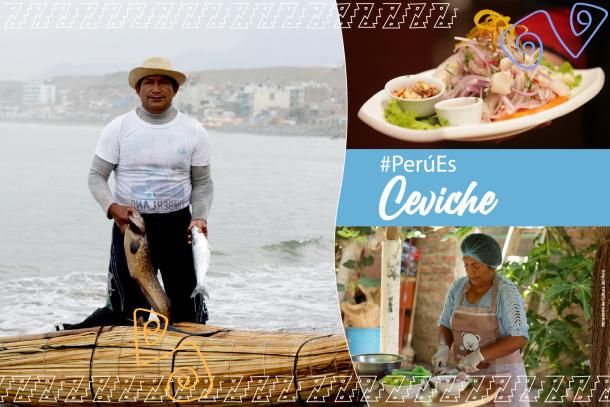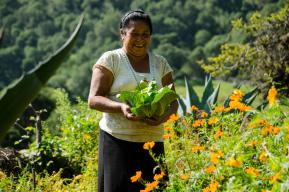News
New inscription on the Intangible Heritage List: Practices and meanings associated with the preparation and consumption of ceviche, an expression of Peruvian traditional cuisine

The Intergovernmental Committee for the Safeguarding of the Intangible Cultural Heritage, meeting in Kasane (Botswana) from 3 to 9 December, today inscribed the practices and meanings associated with the preparation and consumption of ceviche, an expression of traditional Peruvian cuisine, on UNESCO's Representative List of the Intangible Cultural Heritage of Humanity.
This element of Intangible Cultural Heritage is the twelfth of the country to be part of this List. It is the first to refer to our culinary culture and the first to cover the entire national territory.
"We congratulate the Ministry of Culture for leading this process that highlights the important value of the practices and meanings associated with the preparation and consumption of ceviche. It is a cultural practice that is directly related to sustainable development and that values artisanal fishing, sustainable lemon production, but also as a representative expression of traditional Peruvian food, sharing, social cohesion and recognition among Peruvian men and women," said Guiomar Alonso Cano, UNESCO Representative in Peru.
Ceviche is a traditional Peruvian dish prepared with raw fish marinated in lime. As recipes vary from region to region, it reinforces regional and national cultural identity. It is consumed as a daily dish and also at social gatherings and celebrations. Ceviche can be prepared at home or sold in traditional venues such as cevicherías. Generally passed down within families, its preparation and consumption involves specific practices, knowledge and meanings at each stage, from fishing, to the cultivation of the ingredients and the various forms of preparation.
Although it is an element of traditional Peruvian gastronomy often linked to the coast, cebiche is prepared in all departments of Peru with a diversity of local ingredients, resulting in several regional variations.
"We congratulate the Ministry of Culture for leading this process that highlights the important value of the practices and meanings associated with the preparation and consumption of ceviche. It is a cultural practice that is directly related to sustainable development and that values artisanal fishing, sustainable lemon production, but also as a representative expression of traditional Peruvian food, sharing, social cohesion and recognition among Peruvians", said Guiomar Alonso Cano, UNESCO Representative in Peru.
For the nomination to the List, the Ministry of Culture invited and gave a voice to farmers, fishermen, cooks, picanteras, among other bearers of ceviche know-how. The preparation and consumption of ceviche is part of a complex system that includes diverse culinary styles, techniques and knowledge passed down from generation to generation.
"This registration will make visible the great contribution to food and highlight the work of our artisanal fishermen, agricultural producers and traditional cooks from all over the country, promoting the care and sustainability of the resources that are fundamental and make our traditional cuisine so diverse. This will serve not only as a reinforcement of identity, but also as an economic booster, and as a dynamiser of social relations and a driver of citizenship and development," said Leslie Urteaga Peña, Peru's Minister of Culture.
Within this framework, a multi-platform campaign called #PeruEsCeviche will be developed, which will aim to highlight and share the cultural richness of the preparation and consumption of ceviche, as well as to present the diversity of traditions that this emblematic dish contributes to Peruvian identity and fills them with pride.
- More information on the Peruvian elements inscribed on UNESCO's Representative List of the Intangible Cultural Heritage of Humanity
- Dive into the Intangible Heritage. Conceptual and visual constellation of almost 500 elements inscribed on the lists of the 2003 UNESCO Convention.








